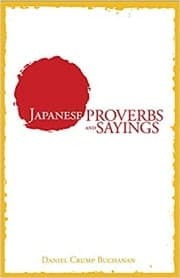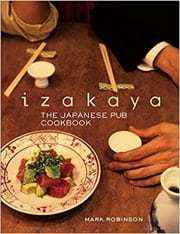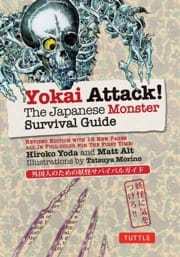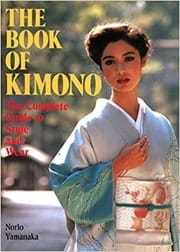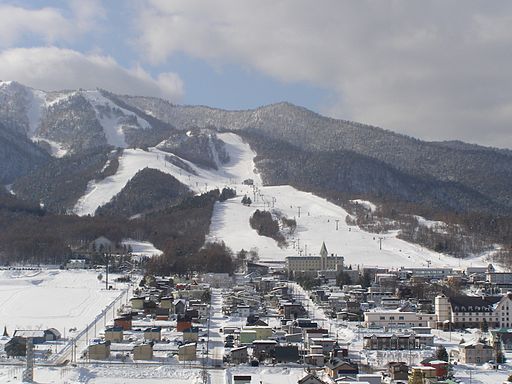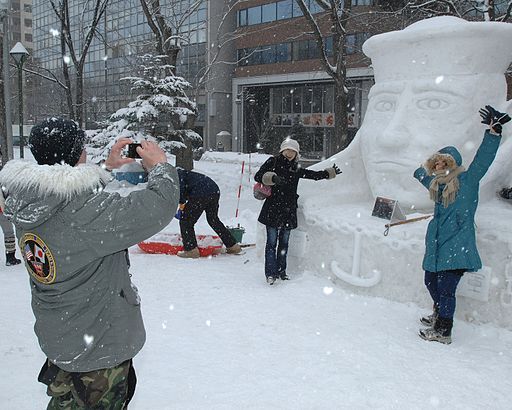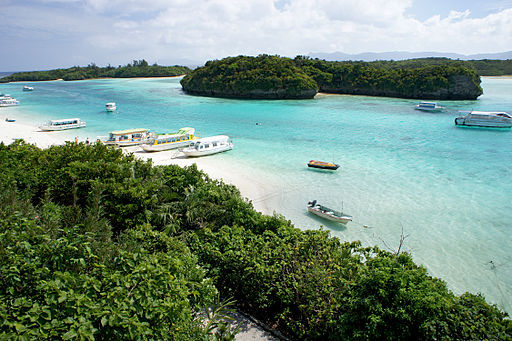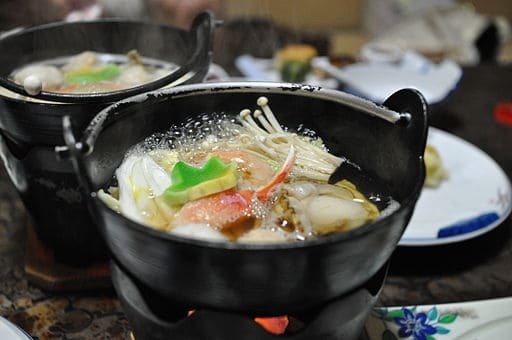Steph Gennaro's Blog
April 13, 2023
Exploring Japanese Gardens: A Visual Tour
Have you ever been curious about the serene beauty of Japanese gardens? I know I am! They are my favorite places to visit in Japan when I travel there. I try to visit a garden in every city I travel to. Japanese gardens have a rich history and play a significant role in the country's culture and aesthetics. These enchanting spaces are not only visually stunning, but they also carry deep symbolism and evoke a sense of peace and harmony.
In this visual tour, we'll take a closer look at the key elements that make up these tranquil gardens, their underlying philosophies, and the different types of gardens you can find in Japan.
 Key Elements of Japanese Gardens
Key Elements of Japanese GardensAs we dive into the world of Japanese gardens, it's essential to understand some of the core elements that make these spaces so captivating.
Rocks and Stones: These aren't just random pebbles! Rocks and stones play a vital role in Japanese gardens, symbolizing stability and strength. They're meticulously chosen and carefully placed to represent mountains, islands, or even the flow of a river. Sometimes, they even form the central focal point of a garden, inviting you to pause and reflect.
Water Features: Flowing water has always been an important symbol in Japanese culture, representing purity and the passage of time. In gardens, you'll often find ponds, streams, and waterfalls that help create a soothing atmosphere. Ponds might represent oceans or lakes, while waterfalls and streams add a sense of movement and energy.
Plants and Trees: Nature takes center stage in Japanese gardens, with plants and trees meticulously chosen and pruned to evoke the changing seasons. You'll often see evergreen trees, which symbolize longevity, and flowering plants like azaleas, camellias, and, of course, cherry blossoms, which remind us of the fleeting beauty of life.
Lanterns and Stone Ornaments: These charming additions bring both function and beauty to Japanese gardens. Stone lanterns light the way along pathways, while basins provide a place for ritual cleansing. You might also spot stone pagodas or statues, which add a touch of grace and a sense of history to these peaceful spaces.
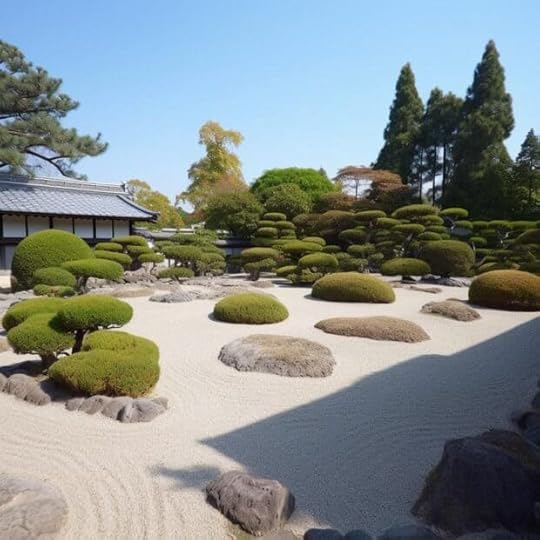
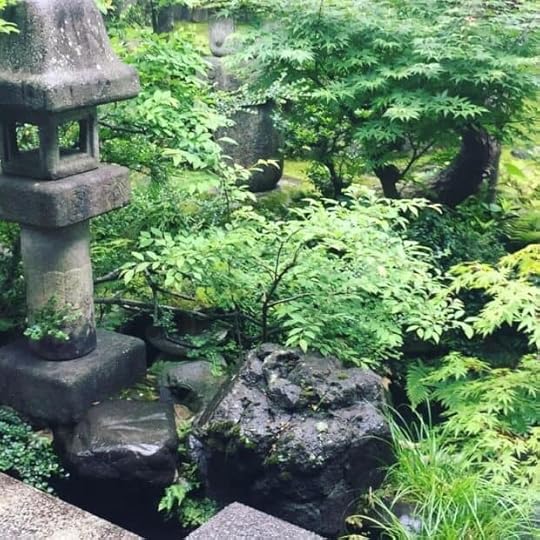
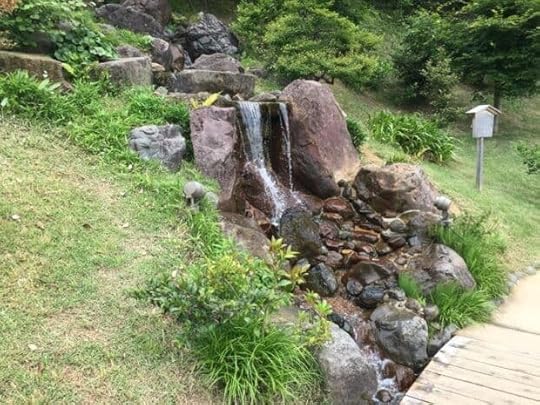 Types of Japanese Gardens
Types of Japanese GardensThere are a few types of styles when it comes to Japanese gardens that include:
Karesansui (Dry Landscape) Gardens: Rock gardens and their meditative qualities
Tsukiyama (Hill and Pond) Gardens: Natural landscapes in miniature
Chaniwa (Tea) Gardens: Tranquil spaces designed for tea ceremonies

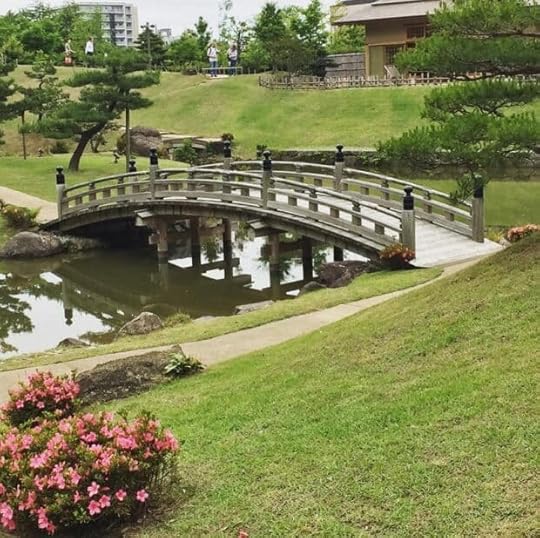 The Philosophy Behind Japanese Gardens
The Philosophy Behind Japanese GardensJapanese gardens are more than just pretty places – they're steeped in symbolism and cultural values that make them truly unique.
The concept of Wabi-sabi: The unmistakable beauty of Japanese gardens reflects Wabi-sabi, a philosophy that celebrates the passage of time and cherishes imperfection. In gardens, you'll see this through the use of weathered stones, uneven pathways, and plants that change with the seasons. It's all about finding beauty in the imperfect and appreciating the transience of life.
The balance of Yin and Yang: Harmony is at the heart of Japanese gardens, and this is achieved through the balance of Yin (dark, passive) and Yang (light, active) elements. As you look around, your eye will catch the harmony of light and dark, the dichotomy between stillness and movement, and the juxtaposition of soft greenery with hard rocks. This equilibrium is meant to reflect the cyclical nature of the environment around us.
The influence of Zen Buddhism on garden design: Zen Buddhism has informed Japanese gardens, which are meant for reflection and mindfulness. Many feature arranged elements and specific viewpoints that invite visitors to take their time and appreciate the beauty of nature.
So, as you can see, Japanese gardens are more than just a feast for the eyes. They're carefully crafted spaces that embody deep philosophical principles, inviting you to connect with nature and reflect on life's impermanence and beauty.

 Notable Japanese Gardens to Visit
Notable Japanese Gardens to VisitRyoan-ji Temple (Kyoto): A famous Zen rock garden
Kenroku-en Garden (Kanazawa): A beautiful landscape garden with ponds and hills
Koraku-en Garden (Okayama): A spacious stroll garden with teahouses
Adachi Museum of Art Garden (Shimane): A modern Japanese garden with a focus on art
I visited Kenroku-en Garden when I was in Kanazawa in May 2018. It was a lovely serene place. I could have spent hours just sitting there, enjoying the good weather and reading.
I hope this visual tour has given you a newfound appreciation for the serene beauty and profound symbolism of Japanese gardens. These enchanting spaces are truly a testament to Japan's unique culture and aesthetics, offering a tranquil escape from the hustle and bustle of daily life.
As you continue to explore the world of Japanese gardens, I encourage you to visit some in person or even create your own little oasis inspired by these principles. No matter where you are, the calming influence of these gardens can have a lasting impact on your well-being and your connection to nature.
Want to learn more about Japan and read some cozy mysteries set in Japan? Subscribe to my mailing list today and read The Daydreamer Detective!
The post Exploring Japanese Gardens: A Visual Tour appeared first on Steph Gennaro.
January 27, 2023
All Books Available in Kindle Unlimited as of February 1st
Just a note to let you know that all of Steph Gennaro's books will be enrolled in Kindle Unlimited as of February 1, 2023.
Hopefully you all will borrow, read, and enjoy!
xo Steph.
The post All Books Available in Kindle Unlimited as of February 1st appeared first on Steph Gennaro.
February 1, 2021
Top 10 Non-Fiction Books On Japan
These books are all ones I’ve read or referenced in order to write all of my books. Over the years, I’ve had plenty of education from talking directly with Japanese people, observing Japanese in Japan, watching Japanese movies and documentaries, and experiencing Japan myself. But books will always be a top reference for me.
So, here we go!
A MODERN HISTORY OF JAPAN: FROM TOKUGAWA TIMES TO THE PRESENT by Andrew Gordon
An excellent book if you’re looking to learn more about Japanese history.
JAPANESE PROVERBS AND SAYINGS by Daniel Crump Buchanan
Many of the sayings or mottos in the books came from this one. I also learned a whole lot about the Japanese group psyche just from reading these, then researching any of them that sounded interesting.
Such a fun book! And lots of great information on ninjas, what they did, and how they did it. I used plenty in here for books on my other pen name.
IZAKAYA: THE JAPANESE PUB COOKBOOK by Mark Robinson and Masashi Kuma
When I needed inspiration for food in my books, this izakaya cookbook saves the day. I pulled several ideas from here for every book I’ve written.
MAKING OUT IN JAPANESE: REVISED EDITION (MAKING OUT BOOKS) by Todd Geers and Erika Geers
Sometimes the polite Japanese words just will not do. When I need people to swear or be rude, this is the book I go to first. Then I double check it with my regular dictionary and ask a few Japanese speaking friends to make sure I get it right.
THE ART OF JAPANESE SWORDSMANSHIP: A MANUAL OF EISHIN-RYU IAIDO by Nicklaus Suino
I knew nothing of Iaido before reading this book and watching YouTube videos on it. Sword fighting is fascinating, but I have never had to use it in the Miso Cozy Mysteries series.
This is a favorite! It’s so well written, researched, and photographed. A must-have if you are interested in geisha or the geisha world. And let me tell you, it’s nothing like the depiction in MEMOIRS OF A GEISHA.
DIASPORA AND IDENTITY: JAPANESE BRAZILIANS IN BRAZIL AND JAPAN by Mieko Nishida
This is new to my collection. I’ve been wanting to read more about Japanese who live outside of Japan and the cultural differences between Japanese in the diaspora and those at home in Japan. It’s been a fascinating read so far, and I hope to include some of what I read here in my new series next year.
In THE DAYDREAMER DETECTIVE RETURNS A FAVOR, Mei likens herself to a shojo, which is a mythical Japanese monster/witch/creature. I learned about tons of yokai from this book! And the author, Matt Alt, is one of the co-hosts of Japanology Plus on NHK World.
THE BOOK OF KIMONO by Norio Yamanaka
Writing about my characters getting dressed in kimono, I realized I needed to learn a whole lot more about the garments and their accessories before really describing them. Between this book and more YouTube videos, plus purchasing my own kimono and accessories, really helped me craft the right prose for those parts of the books.
And that’s it! Hopefully you find plenty here to keep you informed and entertained for some time.
The post Top 10 Non-Fiction Books On Japan appeared first on Steph Gennaro.
January 25, 2021
Top 5 Japanese Winter Destinations
 If you live in Japan or are visiting Japan during the winter, you’re in for a treat. Pretty much every season in Japan is lovely except midsummer when it’s just hot and wet. Spring is hanami season, a time for enjoying the cherry blossoms in bloom. Summer, though hot and oppressive, is full of festivals and cool treats. Fall is perfect for watching the leaves change. And winter is all about the snow and hot springs, hot saké, and trips to tropical locations if skiing is not your thing.
If you live in Japan or are visiting Japan during the winter, you’re in for a treat. Pretty much every season in Japan is lovely except midsummer when it’s just hot and wet. Spring is hanami season, a time for enjoying the cherry blossoms in bloom. Summer, though hot and oppressive, is full of festivals and cool treats. Fall is perfect for watching the leaves change. And winter is all about the snow and hot springs, hot saké, and trips to tropical locations if skiing is not your thing.
In THE DAYDREAMER DETECTIVE BRAVES THE WINTER, Mei doesn’t get to vacation and she must indeed brave the winter at home. But still Yasahiro does promise her some time away at an onsen (hot springs resort). We can only hope they have a great time!
If you want to travel in Japan in the winter, here are my top five destinations!
1) Furano for skiing – Furano in Hokkaido boasts some of the best skiing in Japan, with lots of great resorts that are both accommodating of foreigners and families. If you’re looking to hit the slopes, either skiing or snowboarding, this is the place to do it. I scoured dozens of blog posts and travel websites and Furano was always at the top of the lists.
2) Sapporo for the Snow Festival – If you’re already in Hokkaido and skiing at Furano, then you’ll want to attend the Sapporo Snow Festival! This festival is known world-wide for the ice and snow sculptures, and the festival is popular both during the day and at night when they light everything up. One year, they even had this awesome Star Wars ice sculpture. It was really cool. While you’re in Sapporo be sure to try their Sapporo-style miso ramen. This is my favorite style of ramen and it includes corn. Yes, corn. http://www.snowfes.com/english/
3) Shirakawa-go for the UNESCO World Heritage houses and village – Shirakawa-go is a quaint and wonderful village at any time of the year, but it comes alive in the winter when the houses are covered with snow and you can see how the thatched roofs work to keep the houses warm and dry. The town also have illumination events every winter where they light up the houses and the surrounding area and there’s a mapped path you can walk to see everything. Supposedly, it’s breathtaking. I really want to see it for myself someday!
4) Beppu for the onsens – If you want to spend your winter holiday soaking in hot springs, Beppu is the place to go. Located on the southern island of Kyushu, Beppu has eight major geothermal hot springs, sometimes called the 8 Hells of Beppu (sounds enticing right?) With many resorts to choose from, from small intimate family-run hotels to larger, 5-star accommodations, there’s something for everyone here. But really, most people go to relax, to sit, to eat, and to sleep. That sounds heavenly to me!

CC BY-SA 3.0, https://commons.wikimedia.org/w/index...
5) Okinawa for warmth – But I wouldn’t blame you if winter is not your thing. I personally am not a fan of cold nights, snow, and no sun, so if you need warmth like I do, you’ll want to head to Okinawa. Mostly known for the US military bases and the battles that were fought there during WWII, Okinawa is a tropical island with a rich and diverse history. The more I learn about it, the more it reminds me of Hawaii, with its flowered shirts, surfing culture, white sand beaches and clear blue water. You can go, get a tan, swim in the warm waters, and eat awesome unique food until they need to roll you back onto the plane home.
Japan has so many places and things to see in the winter, you will never be bored!
The post Top 5 Japanese Winter Destinations appeared first on Steph Gennaro.
January 11, 2021
Japan Tea Shop Inspiration
When it comes to my books and Japan, tea is an important part of the story. In the Miso Cozy Mysteries Series, Mei opens a tea shop where she specializes in helping her elderly clients and those around town. She loves her tea shop and everything it represents for her future.
So, when I sat down to write these books, I looked for some good inspiration on how I would picture them in my head so I could describe them for my readers. If you’d like to learn more about tea houses, definitely check out this post on (on my other pen name’s website). Today, I’m going to show you some of the inspirational photos I collected especially for writing THE DAYDREAMER DETECTIVE OPENS A TEA SHOP.
I love this building. It has such charm. This is how imagine most of the buildings in Chikata.
Japan-Kyoto-Uji-City-Kanbayashi-Mitsuboshi-en-Tea-Shop-and-Museum-Byodo-in-StreetView-2-April-2004 by tiarescott, on Flickr
And here are some more storefront inspirations that helped me picture Oshabe-cha, Mei’s tea shop.
Tea Shop @ Uji by Tim Yau, on Flickr
tea by henrie tsai, on Flickr
Wonderland by Lilac and Honey, on Flickr
When it comes to the inside of the shop, I really wanted to have the place be warm wood and eclectic clutter, much like Mei. Remember that she inherited Etsuko’s bento box collection from THE DAYDREAMER DETECTIVE BRAVES THE WINTER, so I picture them on shelves around the shop.
Kaikado – Tea Caddy Shop, Kyoto by Christian Kaden, on Flickr. © Christian Kaden / www.Japan-Kyoto.de
Green Tea Shop by Mathieu Thouvenin, on Flickr
tea shop by sparkle glowplug, on Flickr
Ocha no Kanbayashi, Tea Store in Uji by Christian Kaden, on Flickr. © Christian Kaden / www.Japan-Kyoto.de
I love those photos! They’re truly inspirational. Hopefully they fire up your imagination for when you read the Miso Cozy Mysteries series!
(All photos in this post are used in accordance with Creative Commons Licenses.)
The post Japan Tea Shop Inspiration appeared first on Steph Gennaro.
January 1, 2021
Happy New Year 2021!
Happy New Year, everyone! Usually I send out a newsletter on the first Friday of every month, but seeing as how this Friday has also fallen on New Year’s Day, I have decided to skip January. I want to relax today, and I know you are all spending time with your family or nursing a great big hangover from the craziness of 2020.
I hope you all have a fantastic day and I’ll see you back here soon.
The post Happy New Year 2021! appeared first on Steph Gennaro.
December 28, 2020
Nabé: Japan’s Winter Hot Pot
 When the weather in Japan gets cold, it’s time to break out the hot pots! For the Japanese, there’s nothing better than a bubbling hot pot, pumped full of vegetables, fish, or meat, and sharing it with a bunch of friends around the table. This traditional winter dish, known as nabé (a name for both the food itself and the earthenware pot it’s cooked in), is something everyone looks forward to as the temperatures drop. Yasahiro in THE DAYDREAMER DETECTIVE and THE DAYDREAMER DETECTIVE BRAVES THE WINTER loves a good hot pot dish! In fact, he helps his mother make one when he and Mei go to visit his parents (on a semi-disastrous trip, I might add.)
When the weather in Japan gets cold, it’s time to break out the hot pots! For the Japanese, there’s nothing better than a bubbling hot pot, pumped full of vegetables, fish, or meat, and sharing it with a bunch of friends around the table. This traditional winter dish, known as nabé (a name for both the food itself and the earthenware pot it’s cooked in), is something everyone looks forward to as the temperatures drop. Yasahiro in THE DAYDREAMER DETECTIVE and THE DAYDREAMER DETECTIVE BRAVES THE WINTER loves a good hot pot dish! In fact, he helps his mother make one when he and Mei go to visit his parents (on a semi-disastrous trip, I might add.)
Nabé is usually comprised of a few basic ingredients: a broth, a protein (meat, fish, and or tofu), and vegetables. Sometimes noodles or rice can be added too for extra starch to fill you up. Items are added to the pot before any cooking begins. The ingredients at the bottom are the ones that need to cook the longest, and then everything else is layered on top. Stock is added, the heat is turned on, and the meal starts to cook.
I’ve made a few hot pots and the most labor-intensive part is all the chopping. Once that’s complete, the actual cooking itself is easy and quick. Before you know it, dinner is served!
Many regions of Japan have different types of broth and ingredients that are signature for their area. In Hokkaido, their Ishikari nabé has a rich miso and dashi broth with potatoes, Napa cabbage, tofu, negi (a thick green onion), enoki mushrooms, and salmon. Tonyu nabé has a chicken stock and soy milk base that is much loved by people looking for something really different.
But the most popular version of nabé is Chanko nabé, the biggest hot pot soup eaten by sumo wrestlers to aid in their weight gain. Chanko nabé is absolutely bursting with ingredients! Chicken, beef, seafood, tons of vegetables, and a savory broth. It’ll make you full in no time flat. Restaurants across the country specialize in sumo-themed Chanko nabé, with tiny sumo ring mockups in the middle of the dining area. They look like fun!

Nabé has a long rich history in Japan, harking back to a time when homes were heated by a fire pit in the center of the house. It was a good place to hang a stone or clay pot and keep food bubbling away all day. Nowadays, portable gas burners are a popular sight in both homes and restaurants. They sit in the middle of the table, with the nabé cooking on it, and people grab ingredients from the central pot with their chopsticks to their own bowls. Because everyone is using their own chopsticks to grab ingredients, nabé is usually enjoyed with good friends and family, people you like and trust. It can be a great way to spend an evening along with a cold beer or some saké! Give it a shot sometime soon!
The post Nabé: Japan’s Winter Hot Pot appeared first on Steph Gennaro.
December 14, 2020
Christmas In Japan
 “Do the Japanese celebrate Christmas?” I hear this question a lot from foreigners. And the quick answer is YES, they do! But it’s not the kind of holiday it is elsewhere. Though Christmas is a Christian holiday, and Japan’s Christian population is only one to two million people (about 1% of the Japanese population), it’s still a fairly popular holiday.
“Do the Japanese celebrate Christmas?” I hear this question a lot from foreigners. And the quick answer is YES, they do! But it’s not the kind of holiday it is elsewhere. Though Christmas is a Christian holiday, and Japan’s Christian population is only one to two million people (about 1% of the Japanese population), it’s still a fairly popular holiday.
For weeks coming up to Christmas, Tokyo and other big cities really bring out the dazzle! Ginza, a popular high-end shopping district in Tokyo, is usually decorated with bright Christmas lights and displays. Glittering trees line the streets and famous actors and musicians are called upon for tree lighting ceremonies in popular areas of town. There’s no mistaking the economic wonderland of Christmas in Japan, much like Christmas in the United States. People shop for bargains and department stores offer special mystery bags you can buy to give to your loved ones.
Since this holiday is not a religious holiday in Japan, it’s not a national holiday. No one gets it off of work. If you want to celebrate Christmas, you must do it on your own time. Christmas is mostly about spreading love and good cheer, so the holiday is geared towards lovers or children. Christmas Eve is considered a romantic holiday, and restaurants for a cozy dinner on this special evening are usually booked months in advance. Presents are usually exchanged with a stroll down a Christmas lighted street. How romantic!
Christmas Day itself will be a bit strange to Americans! The day is for giving gifts to children, eating fried chicken (no joke), and strawberry cake. Kentucky Fried Chicken, a chain restaurant from the United States, has a wildly popular Christmas business in Japan. People will line up to get their bucket of fried chicken on this day and social media is often filled with photos of people eating fried chicken on Christmas! The traditional cake that’s eaten on this day is a layered vanilla sponge cake with white frosting and strawberries, usually both inside and on top. Bakeries battle it out for the best Christmas cake, but you can pick yours up from a 7-Eleven if you like.
When Christmas is over, the lights come down, and Japan moves on fairly quickly. While we in America may keep our lights and decorations up for a week or two more, Japan instead turns towards its most austere holiday, New Year’s Day, which has a richer, more diverse set of traditions to celebrate and enjoy. If you’re interested in learning more about New Year’s in Japan, I will have a post coming up in the New Year all about it. Stay tuned!
The post Christmas In Japan appeared first on Steph Gennaro.
December 1, 2020
THE DAYDREAMER DETECTIVE BRAVES THE WINTER Is On Sale This December 2020!
If you’ve been thinking about picking up THE DAYDREAMER DETECTIVE BRAVES THE WINTER, then wait no longer! It is currently on sale worldwide for US99¢. Sale ends December 31, 2020. Find links for this book on its page on my website.
Purchase THE DAYDREAMER DETECTIVE BRAVES THE WINTER
The post THE DAYDREAMER DETECTIVE BRAVES THE WINTER Is On Sale This December 2020! appeared first on Steph Gennaro.
November 30, 2020
The 10,000 Yen Note
 It’s time to learn more about Japan!
It’s time to learn more about Japan!
When I sent off the second draft of THE DAYDREAMER DETECTIVE FINDS HER CALLING to readers, I got it back from them with a few Japanese specific questions I thought would be fun to answer! So over the next few weeks, I’ll have some specific Japan-related posts that address items from this book!
In THE DAYDREAMER DETECTIVE FINDS HER CALLING, Mei and Yasahiro are talking about buying a security system for their new property, and Mei says,
“But that doesn’t stop the actual accidents that are happening on the property. So, it’ll cost us a few ten-thousand yen, but I’d like to buy a remote, wireless security system with several cameras so we can observe the property when we’re not there — for when we get electricity on the property.”
My reader remarked, “Why 10,000 yen? Is that a normal denomination?”
Yes it is! Let’s break down the bills of Japan.
The Bills of Japan
In the United States, our most commonly used bill is the $20 bill (next to the $1 bill). This is mostly because it’s what banks stock in their ATMs and getting anything other than twenties is a treat. I can’t remember the last time I got anything other than a twenty from an ATM! I usually have to go into the bank and use a teller if I want something smaller. In Manhattan, there are now more sophisticated and well-stocked ATMs where you can get $5 bills but that’s not the norm.
In Japan, 10,000 yen bills are the most popular bills along with 1000 yen bills. So, basically $100 and $10. The 2000 yen bill ($20 equivalent) is super rare and was only issued in the year 2000. In fact, it’s so rare that people think they’re fake! Check out this post I saw on FB. Plenty of people commented that it was real and the guy was lucky to get it.
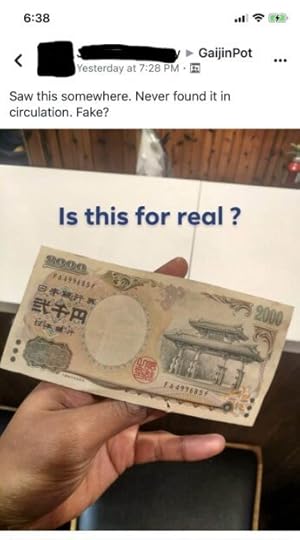
This post from Japan Visitor has a ton of information on both the bills and coins of Japan. Here is what is on the 10,000 yen and 1,000 yen notes…
The Japanese unit of currency is the Yen or en represented by the symbol ¥ and the code JPY.
Bank notes in circulation in Japan are in denominations of 10,000, 5,000, 2,000 (rarely seen) and 1,000 yen. Japanese bank notes and coins are issued by the Bank of Japan in Tokyo.
The 10,000 yen note has a portrait of Yukichi Fukuzawa (1835-1901), the Meiji Period scholar on the front and the reverse has an illustration of the famous Phoenix from Byodo-in Temple in Uji, near Kyoto, which also features on the 10 yen coin…
The latest 1,000 yen note (Series E) issued in 2004 has Noguchi Hideyo (1876-1928), the bacteriologist on the front and an image of Mt Fuji, Lake Motosu and cherry blossoms on the reverse. The previous series of notes issued from 1984-2004 had the novelist Soseki Natsume (1867-1916) on the front and two Red-crowned cranes on the reverse.
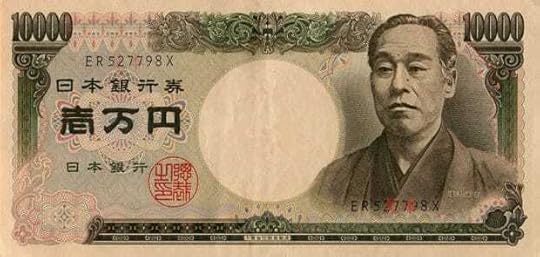
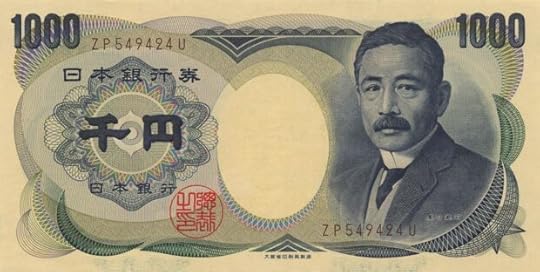
A Cash Society
Japan is mostly a cash society, and people there use cash every day. So 10,000 yen can go pretty fast when you’re paying for things like groceries and dinner out. Almost no one uses a credit or debit card for everyday purchases unless it’s a big ticket item. Plenty of places in Japan are cash-only, giving you no choice but to use bills. If you’re traveling to Japan, the ATM is the first thing you should hit once you pass through Immigration.
When I was last in Japan, I pulled 80,000 yen out of the ATM on my second to last day there. I did the calculation wrong and thought I was getting out $80 when I was really getting out $800! Oof! I freaked out because I didn’t want to have to worry about exchanging all of that back into US dollars. Would you believe I spent all of it but US$120? Between souvenirs, train tickets, duty-free goods, and food, it was all gone pretty quickly. Bills were flying out of my wallet like crazy. I did end up exchanging money at the airport too. They gave me US$20 bills, of course.
The Japanese think very naturally in this denomination. Cash wedding gifts are given in odd numbers of 10,000 yen bills (preferably brand new). Deposits on apartments are done in multiples of 10,000 yen. In THE DAYDREAMER DETECTIVE, Chiyo gave Mei a gift of 60,000 yen in 10,000 yen notes. And convenience stores won’t bat an eye at giving change for 10,000 yen, even if you just want an onigiri and a bottle of green tea.
The 10,000 yen note is the bill of choice for sure!
So now that I’ve told you about the 10,000 yen bill in Japan and the $20 bill in the US, I want to know about the popular bill in your home country! What about Euros or Pounds? Please chime in and let me know!
The post The 10,000 Yen Note appeared first on Steph Gennaro.


